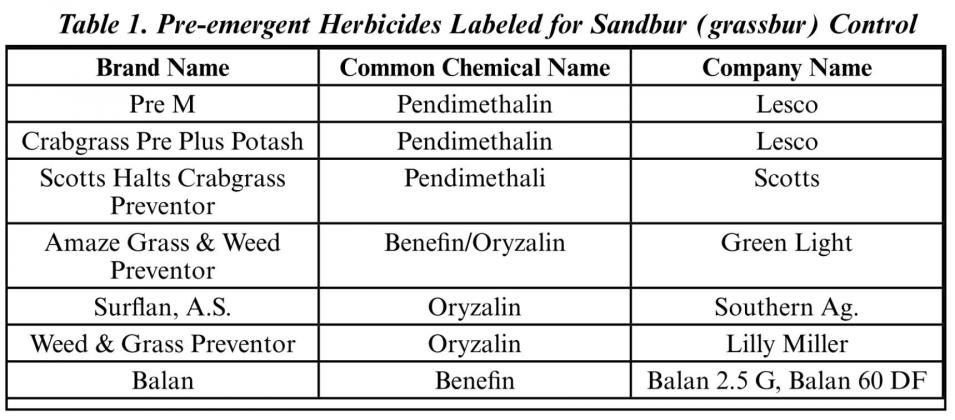Controlling Sandbur in Turfgrass
This dreaded yard and turf weed is the one I get the most calls about how to control and it is one of the hardest weeds to control in turf. There are no excellent herbicides to control sandburs, but there are some pre emergent herbicides that are fair at providing control and now is the time to begin your control efforts. Field sandbur (grassbur) is a summer annual grassy weed that can be found in home lawns, sports fields, parks and along roadsides.
This weed is especially adapted to dry, sandy soils but can be found growing in other types of soils as well. The big problem with this weed is the sharp, spiny burs that are part of the inflorescence.
These burs can be painful and are difficult to remove from clothing material. Field sandburs (grassburs) generally start germinating in late spring and will continue to germinate until late summer or early fall months. This weed will continue to grow until the first hard frost or freeze occurs in the fall.
Field sandburs (grassburs) are generally not a problem in well maintained turfgrass areas. With proper fertilization, mowing and irrigation, you can produce a turf that is dense enough to prevent sandbur (grassbur)s from becoming a problem. However, if field sandburs (grassburs) do become a problem there are several herbicides that can be used to help control this particular weed. The most effective and efficient method of control is to use a pre-emergent herbicide. Table 1 contains a list of the pre-emergent herbicides that have sandburs (grassburs) listed as a weed that is controlled by the chemical in the herbicide. To be effective, these preemergents need to be applied before weed seeds germinate -- generally when the soil temperature (NOT the air temperature) reaches 52 degrees F. This usually occurs by March 15 in the central Texas area.
To insure complete control of germinating grass burrs in heavily infested areas, extend the residual of the herbicide barrier in the soil and thus extend the length of control period by making applications of the pre-emergent herbicide every six weeks through September.
In areas with a light infestation of grass burrs, two applications that are 6 weeks apart and after the initial application should control seed germination. As always, the pre-emergent application needs to be watered in thoroughly.
Not applying enough water after application of a preemergent herbicide is one of the main reasons for failure to effectively obtain control of the annual grassy weeds such as sandburs (grassburs).
REMEMBER: A dense stand of healthy grass provides the best weed control. Because most weeds are “opportunists” that invade weakened lawns, the fight against weeds starts with good management.
All cultural practices such as mowing, fertilizing and watering should be done in a manner and time that will favor the grass rather than the weeds. Height of mowing influences competition against weeds such as crabgrass - the higher the cut, the lower the infestation.
Frequent light sprinkling encourages shallow-rooted weeds and seed germination. Less frequent “deep-soak” watering that maintains a dry surface layer provides the grass with a competitive advantage.
Be sure to read the label and follow label directions. Some products may not be safe to use on certain types of turfgrass, also check with your local lawn care dealer for other sandbur products that they might have.


